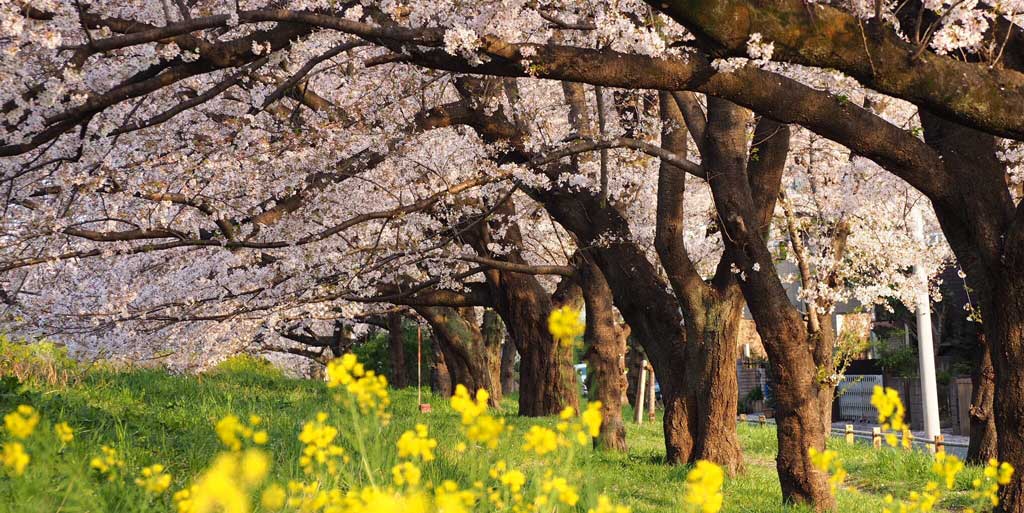You might have heard about the cherry blossom season in Japan, or seen it on your Instagram feed and been tempted to hop on the next plane out there. Sakura (or cherry blossoms) bloom in a stunning mass display of petals all around the country from around late-March to mid-April – but blink and you’ll miss it because the spectacle only lasts for about 2 weeks.
Sakura season is a time for people to come together and celebrate the arrival of spring with flower viewings parties, picnics and – our favourite thing here at Memrise – a whole host of phrases to go with them.
Here are 6 expressions you’ll only hear during sakura season:
1)花見(はなみ・hanami)
Literal translation: “flower watching”
You can watch birds, you can watch trains, and in Japan, you can watch flowers. This centuries-old tradition is known as hanami and it’s a competitive business. People will get to parks hours, even days in advance to secure the best spot to see the breathtaking floral canopy. If you’re an intern or junior at work, forget the coffee run, you might be sent to camp out overnight to save a space for your company picnic instead.
2) 花より団子 (はなよりだんご・hana yori dango)
Literal translation: “dumplings rather than flowers”
Just like you’d munch on popcorn when you watch a film, spectators bring snacks and drinks to eat while they gather to view the blossoms. But some people are more interested in the food than the flowers, giving rise to the saying hana yori dango. One of the more popular picnic treats is the hanami dango: sweet round dumplings served on a stick, with one pink, one white, and one green dumpling.
3) 花明かり (はなあかり・hana akari)
Literal translation: “flower light”
The vast number of cherry blossoms on show creates visual effects that are so unique they require special words to describe them. At night when the sakura are in full bloom, the clusters of petals reflect the light from the stars or from paper lanterns that are sometimes hung in the trees. The resulting warm, ethereal glow is called hana akari, or flower light. This makes late-night hanami picnics (夜桜 ・よざくら・yozakura) a popular choice.
4) 花霞 (はながすみ・hana gasumi)
Literal translation: “flower mist”
Another one-of-a-kind view that you’ll only see in Japan at this time of year is hana gasumi. This
describes the way that the huge number of sakura grouped together look like a big pastel cloud, or a pinkish haze when seen from a distance.
5) 花の雨 (はなのあめ・hana no ame)
Literal translation: “flower rain”
Hana no ame describes the effect you see when the blossoms sprinkle down from the trees onto the ground like rain. The Japanese sure do have a knack for making beautiful imagery out of dreary forms of weather!
6) 桜吹雪 (さくらふぶき・sakura fubuki)
Literal translation: “cherry-blossom blizzard”
The flower petals are very fragile to the touch so with the slightest bit of wind the flowers detach from the tree and flurry through the air in a sakura fubuki, or cherry-blossom blizzard. Definitely beats a snow or rain storm.
So if this has tempted you to book that plane ticket to Japan, think about waiting until next year so you can schedule your trip at the right time to catch this fleeting display of flora. Don’t forget you’ll need to gather some people together for hanami, so here are two bonus expressions from our app that you’ll need to organise your picnic:
今年はもうお花見に行きましたか? (kotoshi wa mō o hanami ni iki-mashita ka?)
“Have you been cherry blossom viewing yet this year?”
お花見に行きましょう (o hanami ni iki-mashō)
“Let’s go cherry blossom viewing”
“








